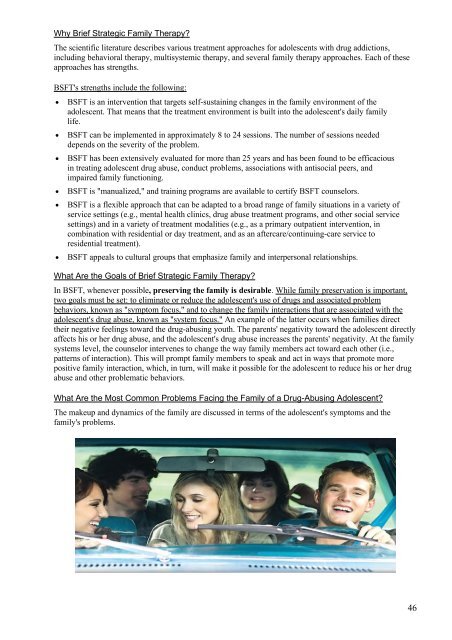FAMILY THERAPY - DEAN AMORY
This is the new, extended and improved version of “An Introduction to Family Therapy”, your reference guide containing detailed information about all important facets of family therapy: schools and methods, strategies used, structure and content of family therapy sessions, stages, basic techniques, influential people, history of family therapy,… Since I feel many people will benefit and appreciate being allowed easy access to this kind of information ordered in short, easily accessible chapters, I decided to make this compilation work - based on information freely available in the public domain -, available for free to everybody as a download file. ----//---- The cover illustration is from Zirta from Mexico: www.zirta.net - email address: beatriz@zirta.net
This is the new, extended and improved version of “An Introduction to Family Therapy”, your reference guide containing detailed information about all important facets of family therapy: schools and methods, strategies used, structure and content of family therapy sessions, stages, basic techniques, influential people, history of family therapy,… Since I feel many people will benefit and appreciate being allowed easy access to this kind of information ordered in short, easily accessible chapters, I decided to make this compilation work - based on information freely available in the public domain -, available for free to everybody as a download file.
----//----
The cover illustration is from Zirta from Mexico: www.zirta.net - email address: beatriz@zirta.net
You also want an ePaper? Increase the reach of your titles
YUMPU automatically turns print PDFs into web optimized ePapers that Google loves.
Why Brief Strategic Family Therapy?<br />
The scientific literature describes various treatment approaches for adolescents with drug addictions,<br />
including behavioral therapy, multisystemic therapy, and several family therapy approaches. Each of these<br />
approaches has strengths.<br />
BSFT's strengths include the following:<br />
BSFT is an intervention that targets self-sustaining changes in the family environment of the<br />
adolescent. That means that the treatment environment is built into the adolescent's daily family<br />
life.<br />
BSFT can be implemented in approximately 8 to 24 sessions. The number of sessions needed<br />
depends on the severity of the problem.<br />
BSFT has been extensively evaluated for more than 25 years and has been found to be efficacious<br />
in treating adolescent drug abuse, conduct problems, associations with antisocial peers, and<br />
impaired family functioning.<br />
BSFT is "manualized," and training programs are available to certify BSFT counselors.<br />
BSFT is a flexible approach that can be adapted to a broad range of family situations in a variety of<br />
service settings (e.g., mental health clinics, drug abuse treatment programs, and other social service<br />
settings) and in a variety of treatment modalities (e.g., as a primary outpatient intervention, in<br />
combination with residential or day treatment, and as an aftercare/continuing-care service to<br />
residential treatment).<br />
BSFT appeals to cultural groups that emphasize family and interpersonal relationships.<br />
What Are the Goals of Brief Strategic Family Therapy?<br />
In BSFT, whenever possible, preserving the family is desirable. While family preservation is important,<br />
two goals must be set: to eliminate or reduce the adolescent's use of drugs and associated problem<br />
behaviors, known as "symptom focus," and to change the family interactions that are associated with the<br />
adolescent's drug abuse, known as "system focus." An example of the latter occurs when families direct<br />
their negative feelings toward the drug-abusing youth. The parents' negativity toward the adolescent directly<br />
affects his or her drug abuse, and the adolescent's drug abuse increases the parents' negativity. At the family<br />
systems level, the counselor intervenes to change the way family members act toward each other (i.e.,<br />
patterns of interaction). This will prompt family members to speak and act in ways that promote more<br />
positive family interaction, which, in turn, will make it possible for the adolescent to reduce his or her drug<br />
abuse and other problematic behaviors.<br />
What Are the Most Common Problems Facing the Family of a Drug-Abusing Adolescent?<br />
The makeup and dynamics of the family are discussed in terms of the adolescent's symptoms and the<br />
family's problems.<br />
46


















